Shear Stress Distribution of the Separation Region on a Plate in Supersonic Jet Flow
Abstract
:1. Introduction
2. Experimental Apparatus
2.1. Test Model
2.2. Experimental Setup of the SSLCC Measurement System
3. Transformation of the Color Images to Shear Stress Distributions
4. Results and Discussion
4.1. Evolution of the Jet Flow–Plate Interaction
4.2. Shear Stress Distributions
5. Conclusions
- (1)
- Under high NPR conditions, the interaction between a supersonic jet and a flat plate induces wall separation, with the flow field primarily characterized by the separation and reattachment of the boundary layer at the trailing edge of the Mach stem. Near the wall, complex reverse flows and vortex structures emerge, posing significant challenges for SSLCC measurements.
- (2)
- The complex flow field with separation and reattachment was successfully visualized by the proposed method for the SSLCC technique. The positions of separation and reattachment can be clearly distinguished, and vortices and adverse flows can be accurately captured. The quantitative measurement of the overall shear stress vector distribution within the separation region demonstrates that the SSLCC technique is well-suited for the visualization and measurement of complex flow structures involving separation and reattachment zones in supersonic flow.
Author Contributions
Funding
Data Availability Statement
Conflicts of Interest
References
- Karami, S.; Stegeman, P.C.; Ooi, A.; Theofilis, V.; Soria, J. Receptivity characteristics of under-expanded supersonic impinging jets. J. Fluid Mech. 2020, 889, A27. [Google Scholar] [CrossRef]
- Karami, S.; Edgington-Mitchell, D.; Theofilis, V.; Soria, J. Characteristics of acoustic and hydrodynamic waves in under-expanded supersonic impinging jets. J. Fluid Mech. 2020, 905, A34. [Google Scholar] [CrossRef]
- Ayupov, R.S.; Benderskii, L.A.; Lyubimov, D.A. RANS/ILES Analysis of the Flow Pattern and the Acoustic Characteristics of a Supersonic Off-Design Jet at Large Nozzle Pressure Ratios. Fluid Dyn. 2019, 54, 114–122. [Google Scholar] [CrossRef]
- Jiao, Y.; Wang, C.; Xie, J.; LI, K.; Cheng, K. Evolution of wall flow structure and measurement of shear stress issuing from supersonic jet withextended shelf. Chin. J. Aeronaut. 2021, 34, 94–105. [Google Scholar] [CrossRef]
- Behrouzi, P.; McGuirk, J.J. Underexpanded jet development from a rectangular nozzle with aft-deck. AIAA J. 2015, 53, 1287–1298. [Google Scholar] [CrossRef]
- Pack, D.C. On the formation of shock-waves in supersonic gas jets. Q. J. Mech. Appl. Math. 1948, 1, 1–17. [Google Scholar] [CrossRef]
- Liepmann, D.; Gharib, M. The role of streamwise vorticity in the near-field entrainment of round jets. J. Fluid Mech. 1992, 245, 643–668. [Google Scholar] [CrossRef]
- Khan, A.; Akram, S.; Kumar, R. Experimental study on enhancement of supersonic twin-jet mixing by vortex generators. Aerosp. Sci. Technol. 2019, 96, 105521. [Google Scholar] [CrossRef]
- Faheem, M.; Khan, A.; Kumar, R.; Khan, S.A.; Asrar, W.; Sapardi, A.M. Experimental study on the mean flow characteristics of a supersonic multiple jet configuration. Aerosp. Sci. Technol. 2020, 108, 106377. [Google Scholar] [CrossRef]
- Semlitsch, B.; Malla, B.; Gutmark, E.J.; Mihaescu, M. The generation mechanism of higher screech tone harmonics in supersonic jets. J. Fluid Mech. 2020, 893, A9. [Google Scholar] [CrossRef]
- Mohammed-Taifour, A.; Weiss, J. Periodic forcing of a large turbulent separation bubble. J. Fluid Mech. 2021, 915, A24. [Google Scholar] [CrossRef]
- Kimura, M.; Tung, S.; Lew, J.; Ho, C.-M.; Jiang, F.; Tai, Y.-C. Measurements of wall shear stress of a turbulent boundary layer using a micro-shear-stress imaging chip. Fluid Dyn. Res. 1999, 24, 329–342. [Google Scholar] [CrossRef]
- Aprojanz, J.; Miccoli, I.; Baringhaus, J.; Tegenkamp, C. 1D ballistic transport channel probed by invasive and non-invasive contacts. Appl. Phys. Lett. 2018, 113, 191602. [Google Scholar] [CrossRef]
- Zare-Behtash, H.; Gongora-Orozco, N.; Kontis, K.; Holder, S. Application of novel pressure-sensitive paint formulations for the surface flow mapping of high-speed jets. Exp. Therm. Fluid Sci. 2009, 33, 852–864. [Google Scholar] [CrossRef]
- Zare-Behtash, H.; Gongora-Orozco, N.; Kontis, K. PSP visualization studies on a convergent nozzle with an ejector system. J. Vis. 2009, 12, 157–163. [Google Scholar] [CrossRef]
- Zhong, S. Detection of flow separation and reattachment using shear-sensitive liquid crystals. Exp. Fluids 2002, 32, 667–673. [Google Scholar] [CrossRef]
- Reda, D.C.; Wilder, M.C.; Farina, D.J.; Zilliac, G. New methodology for the measurement of surface shear stress vector distributions. AIAA J. 1997, 35, 608–614. [Google Scholar] [CrossRef]
- Klein, E.J.; Margozzi, A.P. Exploratory Investigation on the Measurement of Skin Friction by Means of Liquid Crystals; Report No.: NASA-TMX-1774; NASA Langley Research Center: Hampton, VA, USA, 1969.
- Reda, D.C.; Wilder, M.C.; Mehta, R.D.; Zilliac, G. Measurement of continuous pressure and shear distributions using coating and imaging techniques. AIAA J. 1998, 36, 895–899. [Google Scholar] [CrossRef]
- Ruiyu, L.I.; Gao, L.; Zhang, S.; Yongzeng, L.I.; Tianyu, G.A.O. Application of shear-sensitive liquid crystal coating to visualization of transition and reattachment in compressor cascade. Chin. J. Aeronaut. 2018, 11, 2073–2079. [Google Scholar]
- Fujisawa, N.; Oguma, Y.; Nakano, T. Measurements of wall-shear-stress distribution on an NACA0018 airfoil by liquid-crystal coating and near-wall particle image velocimetry (PIV). Meas. Sci. Technol. 2009, 20, 065403. [Google Scholar] [CrossRef]
- Reda, D.C.; Aeschliman, D.P. Liquid crystal coatings for surface shear-stress visualization in hypersonic flows. J. Spacecr. Rocket. 1992, 29, 155–158. [Google Scholar] [CrossRef]
- Chen, X.; Wen, S.; Pan, J.J. Delta wing model skin friction measurement test and data confirming in hypersonic wind tunnel. Phys. Gases 2017, 2, 54–63. [Google Scholar]
- Sugiyama, H.; Minato, R.; Mizobata, K.; Tojo, A.; Muto, Y. Study on shock wave and turbulent boundary layer interactions in a square duct at Mach 2 and 4. J. Therm. Sci. 2006, 15, 37–42. [Google Scholar] [CrossRef]
- Abdel-Aziz, Y.I.; Karara, H.M. Direct linear transformation from comparator coordinates into object space coordinates in close-range photogrammetry. Photogramm. Eng. Remote Sens. 2015, 81, 103–107. [Google Scholar] [CrossRef]
- Preston, J.H. The Determination of turbulent skin friction by means of Pitot tubes. J. R. Aeronaut. Soc. 1954, 58, 109–121. [Google Scholar] [CrossRef]
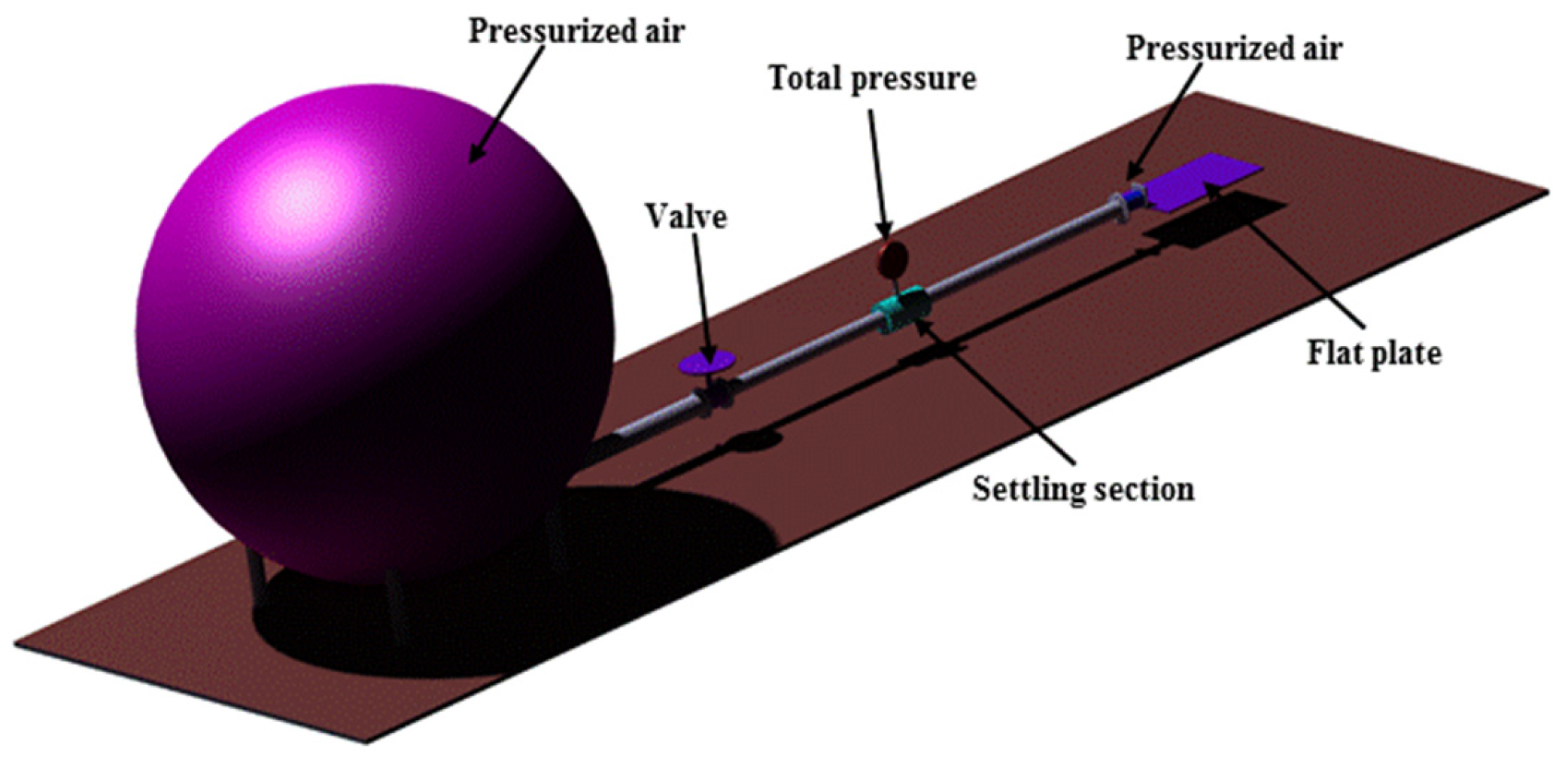
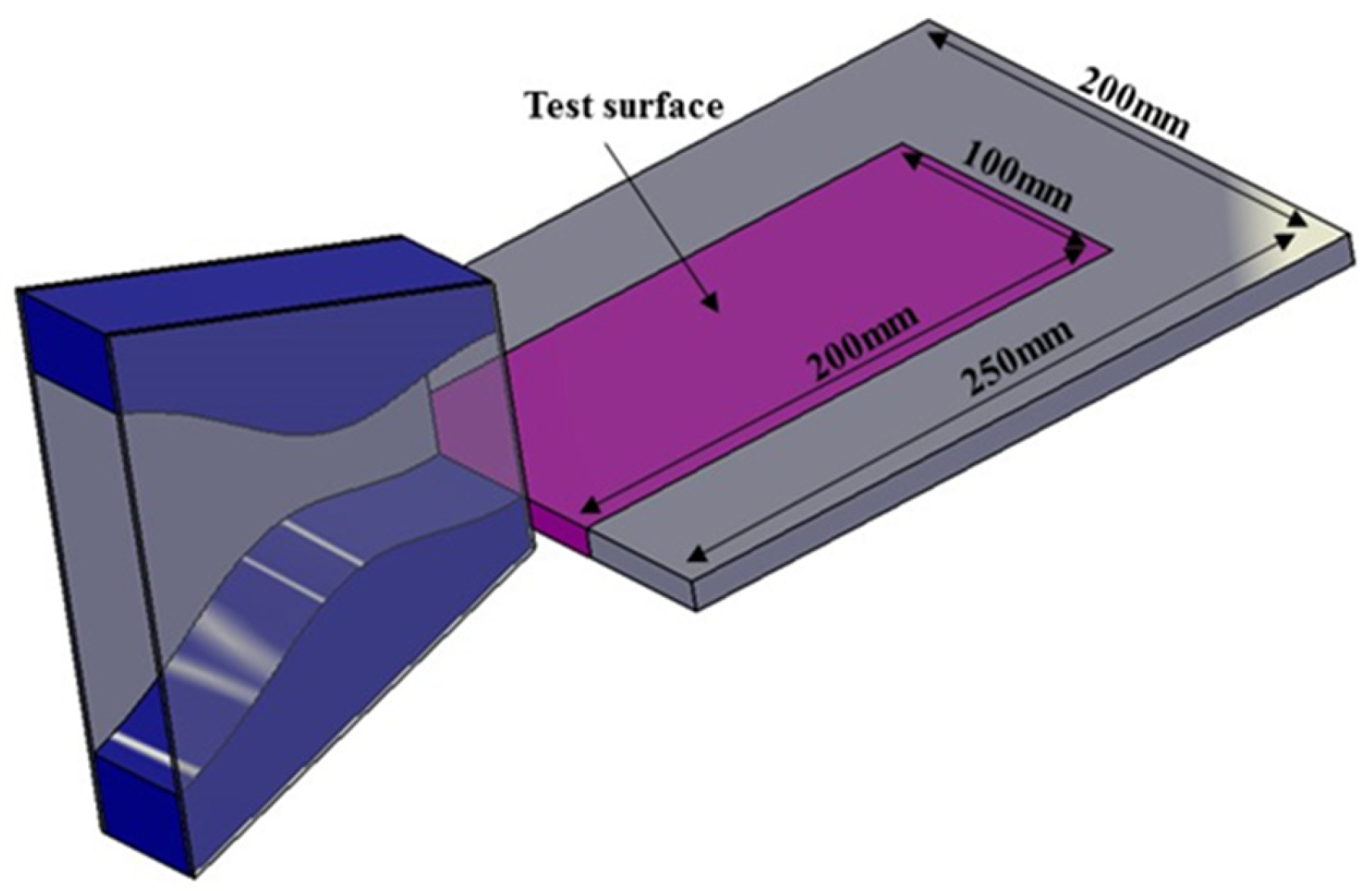
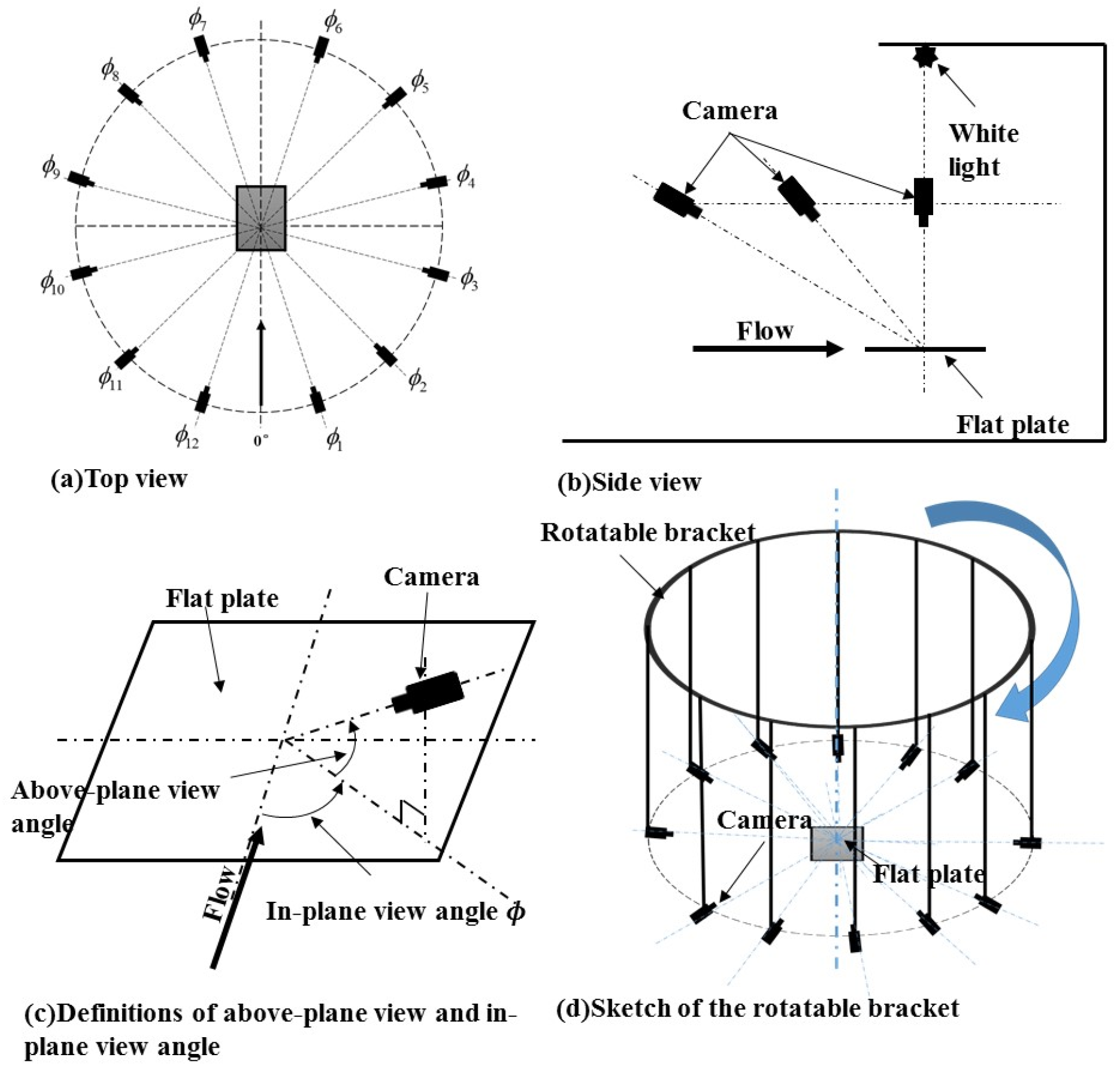
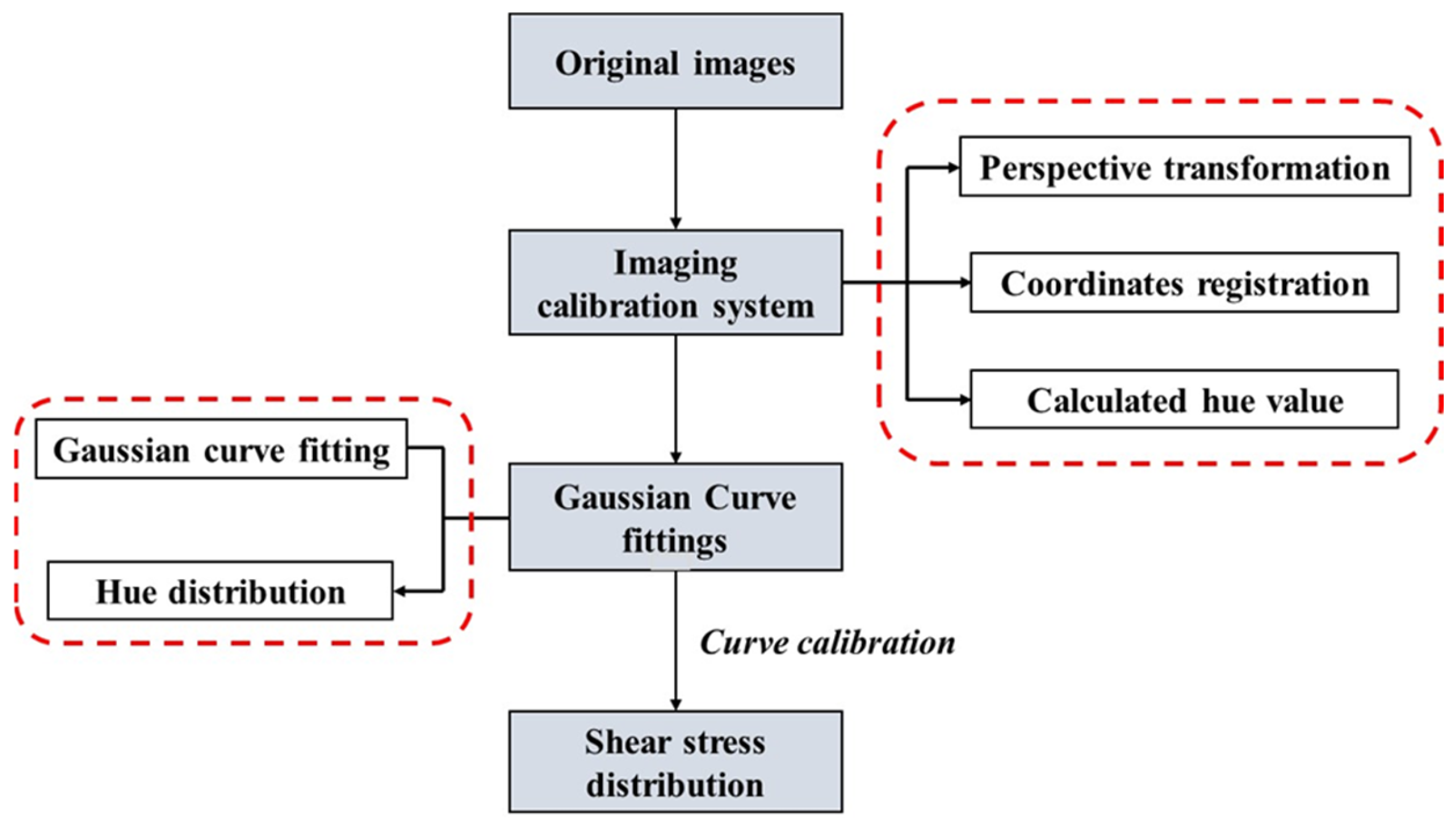

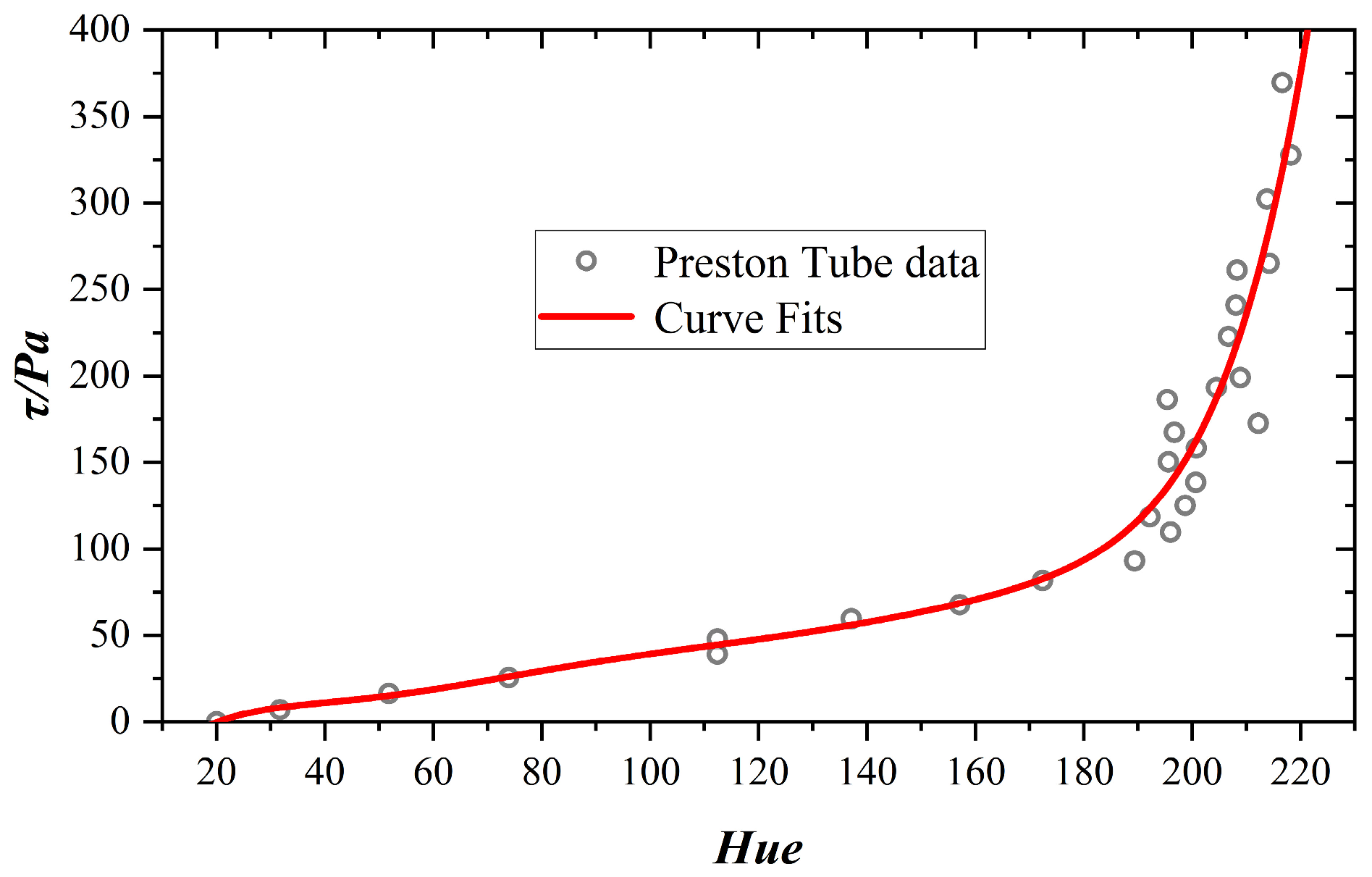
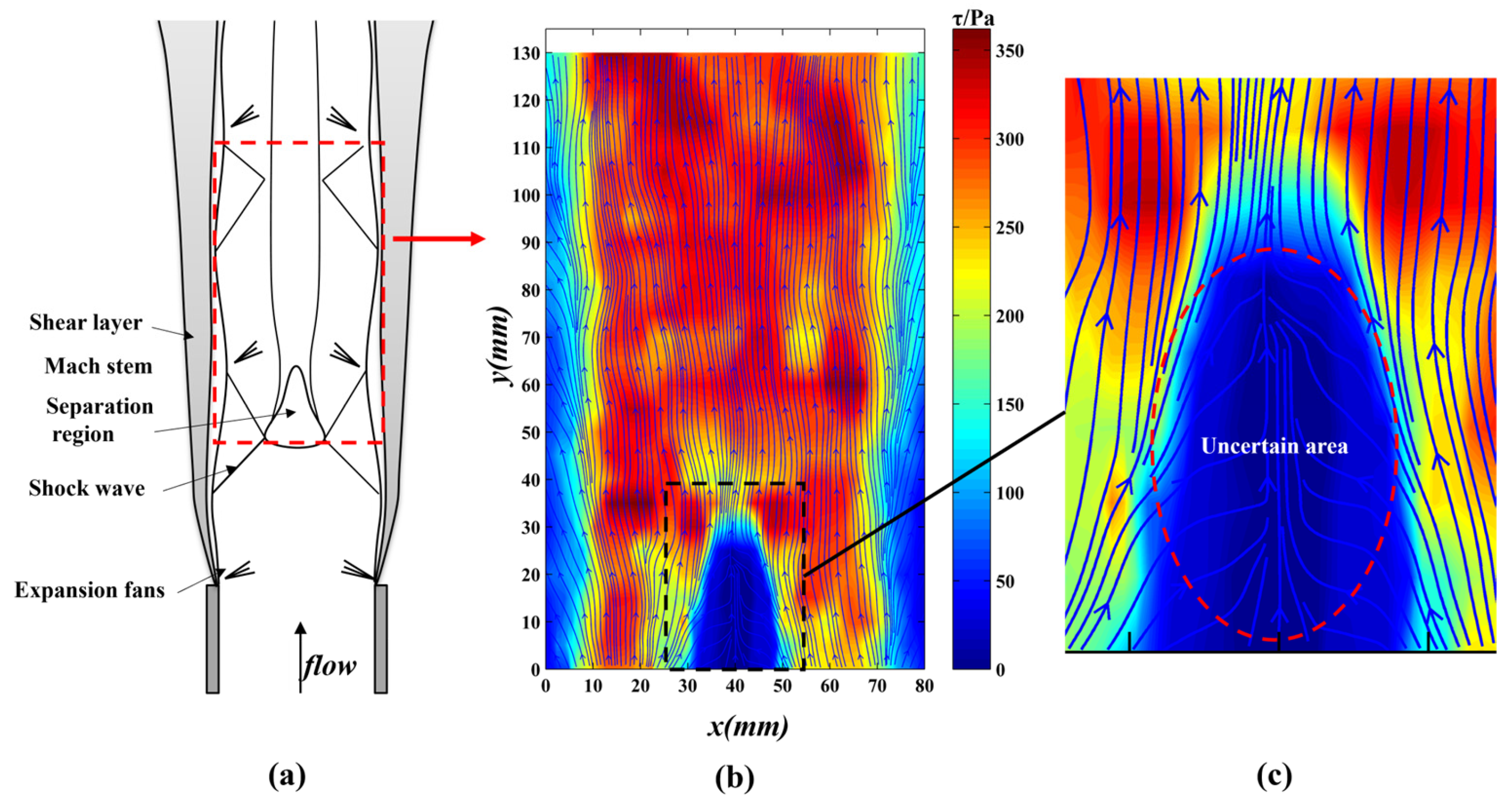
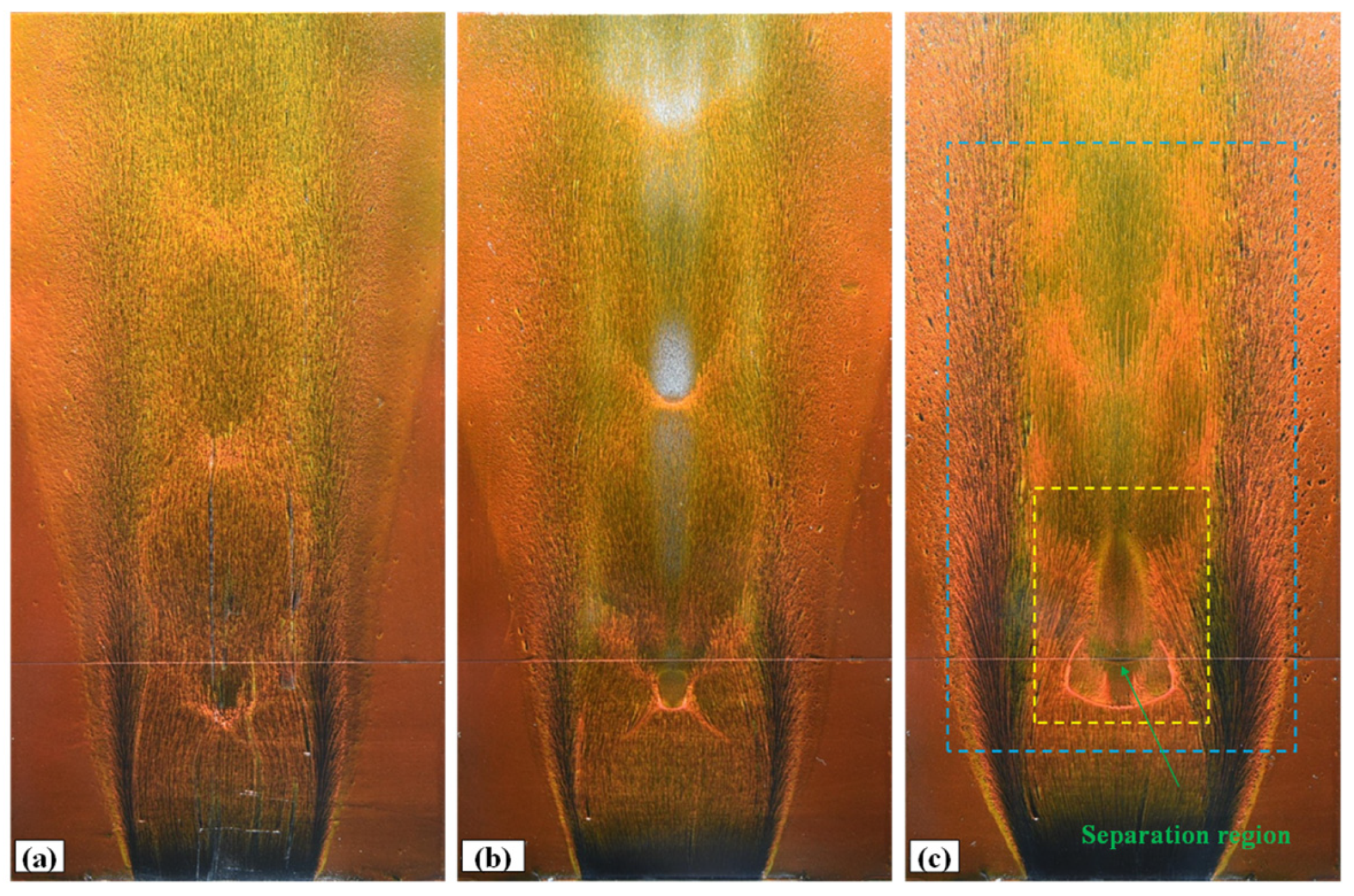
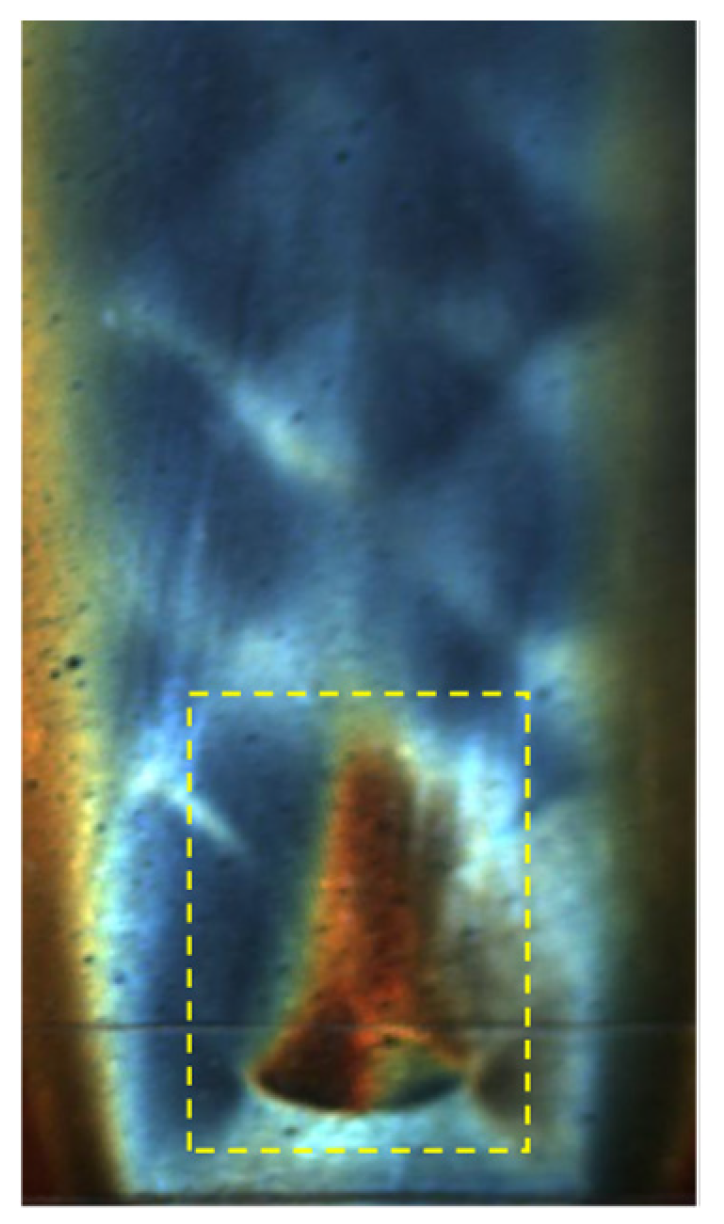

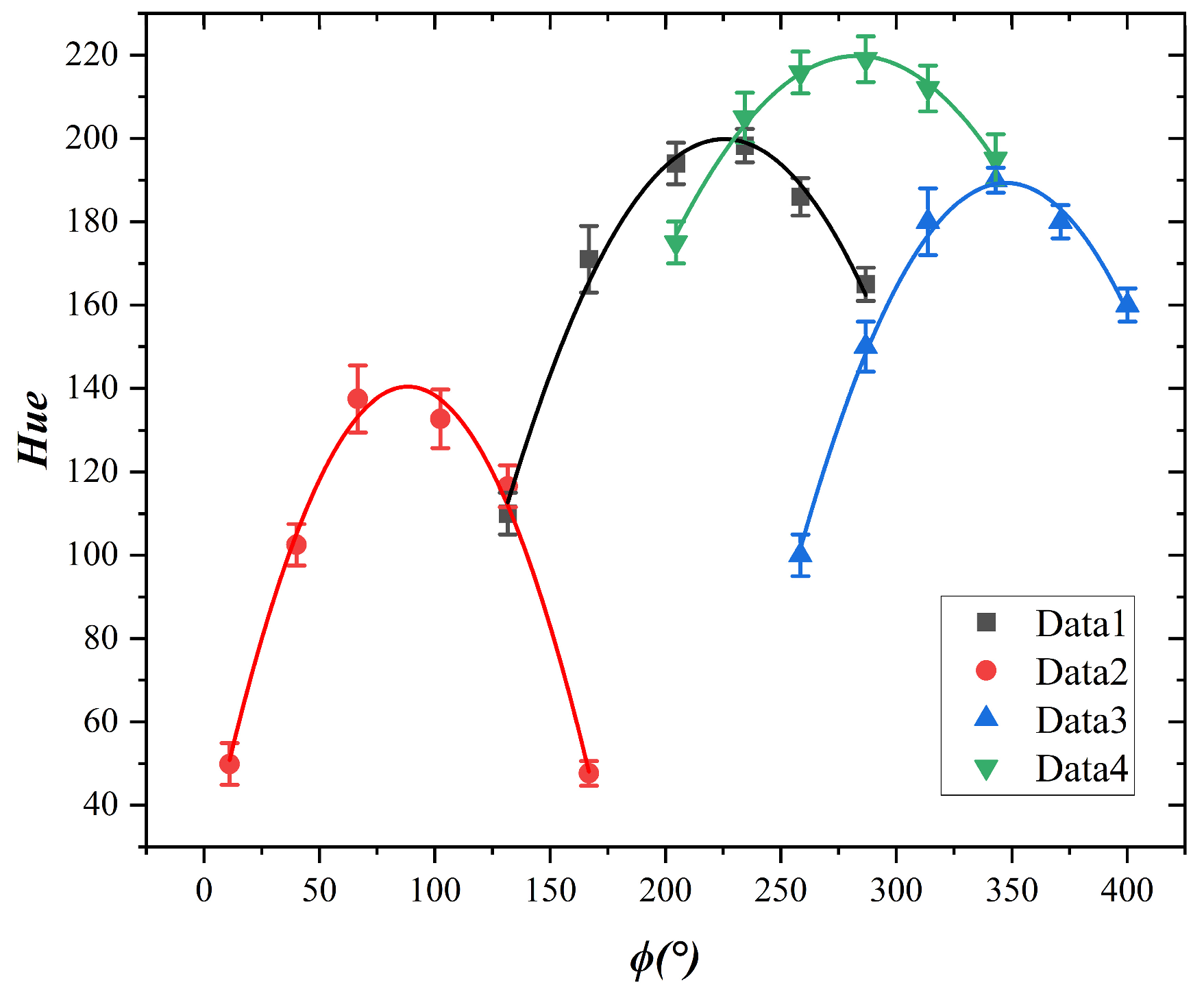
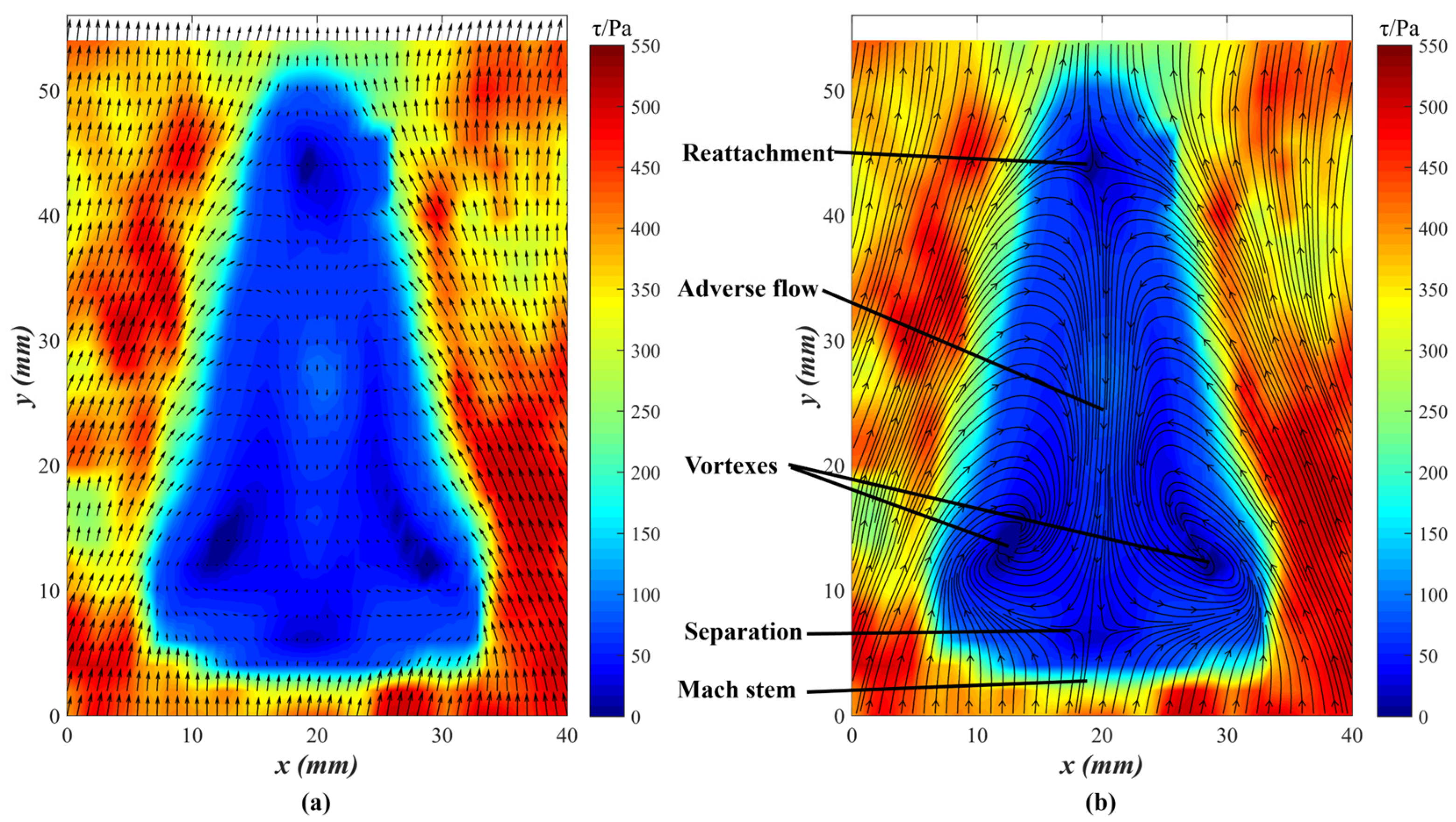
Disclaimer/Publisher’s Note: The statements, opinions and data contained in all publications are solely those of the individual author(s) and contributor(s) and not of MDPI and/or the editor(s). MDPI and/or the editor(s) disclaim responsibility for any injury to people or property resulting from any ideas, methods, instructions or products referred to in the content. |
© 2025 by the authors. Licensee MDPI, Basel, Switzerland. This article is an open access article distributed under the terms and conditions of the Creative Commons Attribution (CC BY) license (https://creativecommons.org/licenses/by/4.0/).
Share and Cite
Jiao, Y.; Li, W.; Ji, Y.; Hou, P.; Yuan, Y.; Xue, L.; Cheng, K.; Wang, C. Shear Stress Distribution of the Separation Region on a Plate in Supersonic Jet Flow. Aerospace 2025, 12, 179. https://doi.org/10.3390/aerospace12030179
Jiao Y, Li W, Ji Y, Hou P, Yuan Y, Xue L, Cheng K, Wang C. Shear Stress Distribution of the Separation Region on a Plate in Supersonic Jet Flow. Aerospace. 2025; 12(3):179. https://doi.org/10.3390/aerospace12030179
Chicago/Turabian StyleJiao, Yun, Weijun Li, Yu Ji, Puchen Hou, Ye Yuan, Longsheng Xue, Keming Cheng, and Chengpeng Wang. 2025. "Shear Stress Distribution of the Separation Region on a Plate in Supersonic Jet Flow" Aerospace 12, no. 3: 179. https://doi.org/10.3390/aerospace12030179
APA StyleJiao, Y., Li, W., Ji, Y., Hou, P., Yuan, Y., Xue, L., Cheng, K., & Wang, C. (2025). Shear Stress Distribution of the Separation Region on a Plate in Supersonic Jet Flow. Aerospace, 12(3), 179. https://doi.org/10.3390/aerospace12030179





